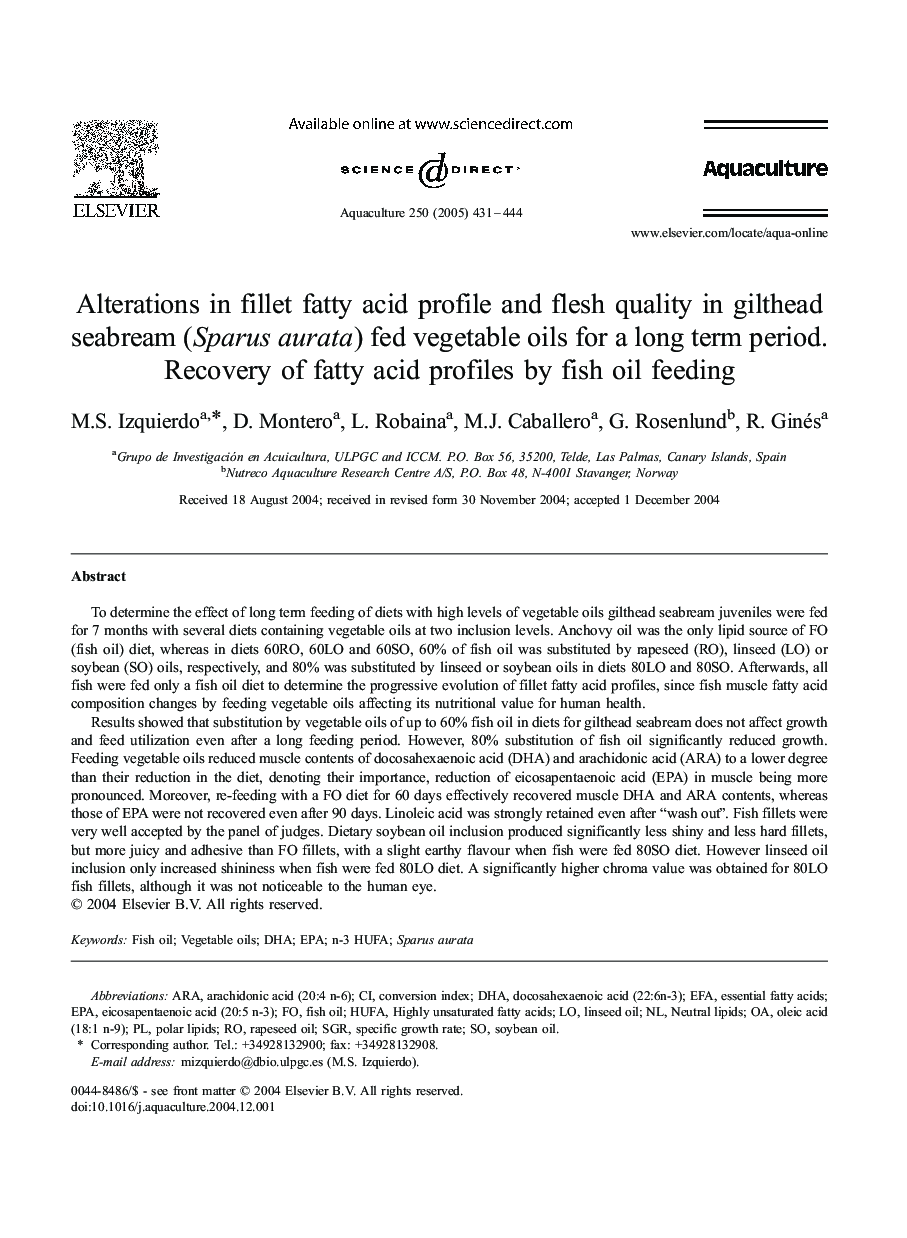| Article ID | Journal | Published Year | Pages | File Type |
|---|---|---|---|---|
| 8974624 | Aquaculture | 2005 | 14 Pages |
Abstract
Results showed that substitution by vegetable oils of up to 60% fish oil in diets for gilthead seabream does not affect growth and feed utilization even after a long feeding period. However, 80% substitution of fish oil significantly reduced growth. Feeding vegetable oils reduced muscle contents of docosahexaenoic acid (DHA) and arachidonic acid (ARA) to a lower degree than their reduction in the diet, denoting their importance, reduction of eicosapentaenoic acid (EPA) in muscle being more pronounced. Moreover, re-feeding with a FO diet for 60 days effectively recovered muscle DHA and ARA contents, whereas those of EPA were not recovered even after 90 days. Linoleic acid was strongly retained even after “wash out”. Fish fillets were very well accepted by the panel of judges. Dietary soybean oil inclusion produced significantly less shiny and less hard fillets, but more juicy and adhesive than FO fillets, with a slight earthy flavour when fish were fed 80SO diet. However linseed oil inclusion only increased shininess when fish were fed 80LO diet. A significantly higher chroma value was obtained for 80LO fish fillets, although it was not noticeable to the human eye.
Keywords
Related Topics
Life Sciences
Agricultural and Biological Sciences
Aquatic Science
Authors
M.S. Izquierdo, D. Montero, L. Robaina, M.J. Caballero, G. Rosenlund, R. Ginés,
